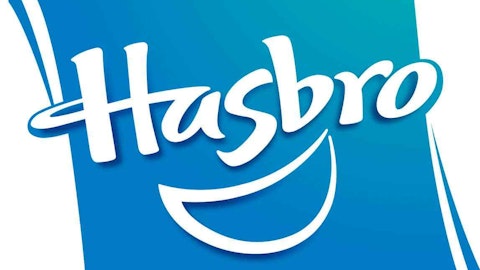Netflix, Inc. (NASDAQ:NFLX) has done very well in 2013 so far; the company has been one of the top gainers in the S&P 500. The company’s rock-solid performance has led to more neutral views, but Netflix still has room to outperform even more. However, before buying into the Netflix, Inc. (NASDAQ:NFLX) story, the possible downsides should be evaluated carefully. Investors should be well aware of the dark sides of an investment in spite of the low probabilities attached to each of the factors below.
1. Licensing deals: As Netflix is becoming a bigger force in the industry it is directly/indirectly competing with the services of a number of content owners. Netflix acquires a lot of content from Time Warner Inc (NYSE:TWX)‘s subsidiary, Warner Bros. and the company competes at least indirectly with Time Warner Inc (NYSE:TWX)’s business unit, HBO. As a result, Warner Bros. might be more reluctant to sign deals with Netflix, Inc. (NASDAQ:NFLX), or ask for higher prices in content license negotiations to serve the interests of HBO.
Also, Netflix signed a big multi-year deal with The Walt Disney Company (NYSE:DIS) for providing a number of first run shows to Netflix users. And The Walt Disney Company (NYSE:DIS) owns a third of Hulu, which is one of the biggest competitors of Netflix in the subscription video on demand (SVOD) space. Netflix’s ability to strike deals with content owners to expand its streaming catalog might be affected due to such conflicts of interest in the entertainment industry.

The company has refinanced and added more debt for general corporate purposes, but if the original shows cross their budgets significantly, the company might be forced to take on more debt. And if the debt issued in the future is convertible, equity investors face dilution risk, in addition to incremental credit risk.
3. Rising prices of content: Along with the rising prices of catalog content from studios and content owners, Netflix, Inc. (NASDAQ:NFLX)’s leading competitors are bidding heavily for content licensing deals. Amazon is known for making big investments to capture market share from competitors. And Hulu got fresh cash injection of more than $750 million from The Walt Disney Company (NYSE:DIS), Fox and NBC to add more content. As a result, the presence of Hulu and Amazon in the table will drive the price of content upwards.
4. Competition is surging: In addition to existing subscription video-on-demand players, newer ones are popping up. Outerwall Inc (NASDAQ:OUTR) and Verizon’s joint venture, Redbox Instant brings added competition to the Internet streaming business. Redbox is increasingly a very dominant automated DVD retailer with more than 47% market share, and can lure customers who like physical discs to get subscriptions for Redbox Instant.
Amazon doesn’t disclose subscriber numbers for Prime but it is widely expected to be in the 8-10 million region, and Hulu Plus surpassed the 4 million subscriber mark. Time Warner Inc (NYSE:TWX)’s HBO has more than 28.77 million subscribers in the U.S., and many of them use the HBO Go app. The increased number of competitors in the Internet streaming business, along with large consumer platforms like Apple Inc. (NASDAQ:AAPL) and sites like YouTube can gain market share through user defection from Netflix, Inc. (NASDAQ:NFLX)’s user base.
5. Secular Decline in DVDs: Netflix earns a large portion of its total contribution profits from its DVD segment, but the number of consumers using physical DVDs is declining steadily. Netflix has been taking the profits from its DVD business and plowed it back into the domestic and International streaming businesses for long-term growth. However, the company is losing DVD subscribers at a solid pace.
Even though movie studios and content owners still rely upon DVDs for a portion of their revenues, the market for physical DVDs is expected to shrink further. As a result, a large part of Netflix, Inc. (NASDAQ:NFLX)’s contribution profits will be reduced dramatically.
6. Losses from International segment: The rise in Netflix’s stock price to a certain extent, is predicated on the company’s ability to succeed in the International markets. The company has gained solid momentum in adding subscribers, but has losses stemming from its International operations. Netflix did manage to reduce the losses arising from its overseas operations.
Netflix operates in more than 40 countries, and it takes a lot of capital expenses to build out these markets and add a lot of content to turn these regions into profitability. The company’s management pointed to roughly two years before Netflix can become a profitable player from its International operations.
Going Forward
Netflix, Inc. (NASDAQ:NFLX) has a few potential headwinds, but the company is growing its subscriber base rapidly. The company still has a large addressable market in the U.S. and in the International markets as well. The company is adding a lot of exclusive and original content to minimize its churn rate and grow its profits in the long-run.
The article Possible Downsides of Netflix originally appeared on Fool.com and is written by Ishfaque Faruk.
Ishfaque Faruk has no position in any stocks mentioned. The Motley Fool recommends Netflix and Walt Disney (NYSE:DIS). The Motley Fool owns shares of Netflix and Walt Disney. Ishfaque is a member of The Motley Fool Blog Network — entries represent the personal opinion of the blogger and are not formally edited.
Copyright © 1995 – 2013 The Motley Fool, LLC. All rights reserved. The Motley Fool has a disclosure policy.




